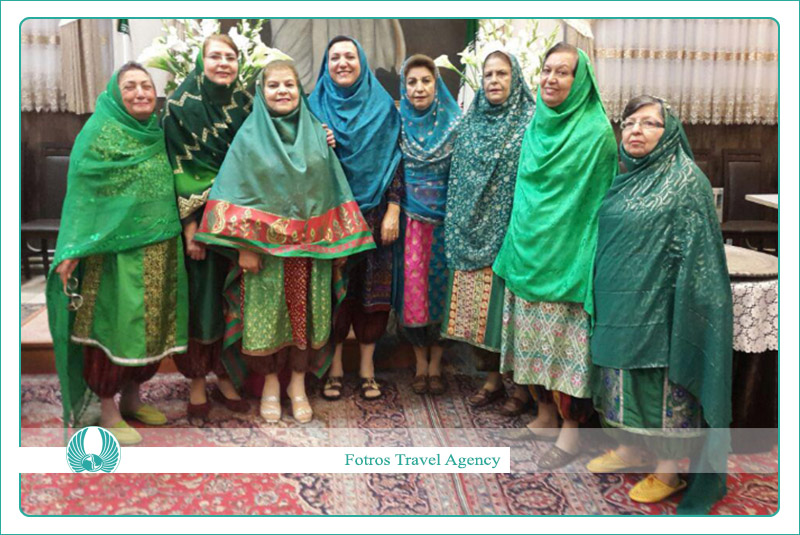
Dress Code In Yazd
“Dress Code in Yazd”
People’s clothes in Yazd is just the same as people’s dress code in other cities and villages of Iran nowadays. But some of the locals are still wearing their traditional clothes since many years ago. Women wearing long trousers and dresses which cover to their ankle, and putting on something like a big size traditional scarf on their head. This kind of scarf is about 3 meters long and one-meter width, covering till hands in front and till feet from behind. Men, however, wearing just so ordinary like all other men.

These days, Zoroastrians (who mostly live in Yazd), are wearing as simple as other people. They wear their special traditional clothes only in religious and formal occasions in which they do prayers.
Zoroastrians women’s traditional clothes in Yazd for like 50 years ago was specified just to a particular part of Iran that probably could be Khorasan or Isfahan province. The point which is mentioned the most in different Travelogues is that Zoroastrians women were so interested in warm colors. So that they used to wear colorful scarves, plaid fabric dress or polka-dotted trousers a lot. Also, on the edges of the dress or scarves, there were brilliant designs to make the clothes more beautiful.

Zoroastrian Men were wearing a long brown garment with white lines used inside them as a design, together with a white turban on their head. They mostly used to wear whole in white and let their beard just grow long.so maybe that’s why they are known as “Sefid Jamegan” (people who wear whole white) in some books. The texture of these clothes was soft cotton. These clothes were weaved by local people and were called “Karbas”. They didn’t used to spend money on buying them!
Until the first Pahlavi era, Zoroastrians had to wear the way which could be distinguished by other people. Shocking point is that they weren’t even allowed to wear socks. Also, wearing rings and wristwatch was listed as the forbidden outfits to be used. They weren’t permitted to ride any kind of four-leg animal or go to public bathrooms!

However, if we want to claim about how grandchildren of these people are wearing, unfortunately as we mentioned above, it’s so rare to notice as people are walking in streets and doing their daily life duties in traditional clothes.
The most considerable point which history of dressing code in Iran illustrates is that nudity was never common in Iranian culture, even before the Islamic era.

These days Islamic dressing code is saying people to wear suitable clothes, women to have a hijab and covering their body with not very tight clothes and men also clothes which doesn’t attract others attention.
Iranian women are having Hijab + Manto + Scarf as the main common feminine style during these recent 40 years.
Written by:
Sara Bagheri Nezhad
Related Tags:
We love to hear your comments